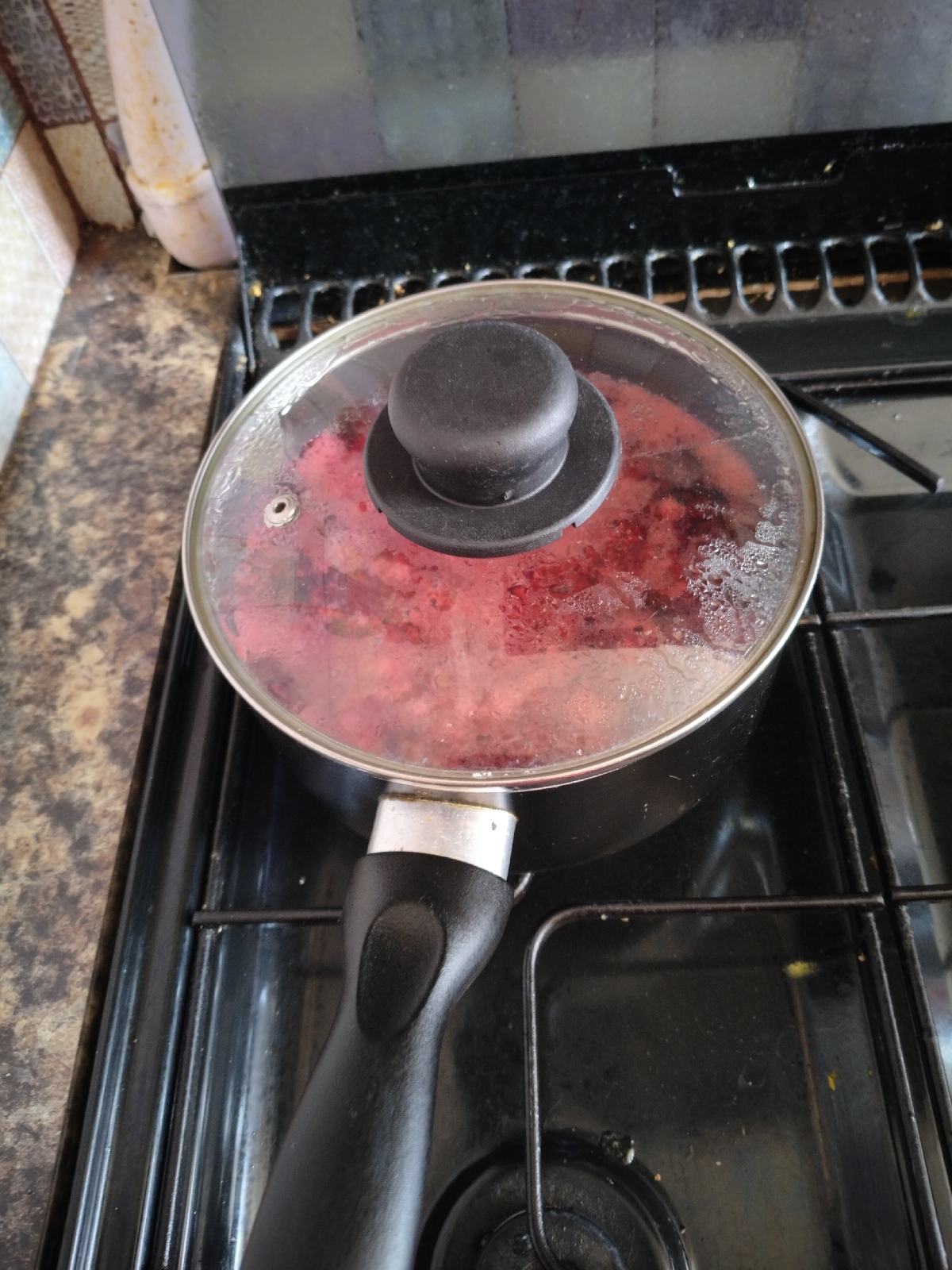This was a little too salty for my taste, but not too bad. Maybe the Stock Pot was a mistake....
Mrs Redboots' Food and Recipes
14 November 2025
Onion gravy (or sauce)
13 July 2025
Red fruit shrub
27 January 2025
Chickpea stew
Season to taste, and then bring to the boil and allow to simmer for about 30 minutes. This will serve 3 or 4, especially if you add rice or quinoa or similar. I used quinoa to add more protein.
16 December 2024
Turkey rice
24 October 2024
Not-meat loaf with rich tomato sauce.
Three nights ago, I made stuffed spaghetti squash for supper (link). There was about half left over, so tonight I decided to make it into a kind of meatloaf. Only not, because it has no meat in it!
I whisked up two eggs with some seasoning - the stuffing was extremely good, but I thought lacked salt, and might have been even nicer with a bit of spice in it. Then I put the stuffing into a large bowl, and poured over the eggs. Using my hands, I mixed it all together, then put it into a loaf tin and topped with grated cheese (because everything is better with cheese on the top, right?)
, and put it in the oven at gas 5 for about 40 minutes. I served this with a rich tomato sauce (link).
It wasn't quite as set as I'd hoped, but it really was delicious.
Would have happily served 3 - we had really rather a greedy amount each!
21 October 2024
Stuffed spaghetti squash
You can't often get spaghetti squash in this country, but I was delighted to be able to buy one in Germany or Austria (forget which) during our recent holiday (link).
So last night I rootled around on the Interwebs to see if I could find out what people liked doing with it, and this was the result.
Mix that, and the diced halloumi (if using), into the vegetable mix, and pile the skins full of this.
There will undoubtedly be a shedload left over, but you can use that in all sorts of ways. Put the filled skins back into the oven for 10-15 minutes and then serve at once. It was delicious, but could have used a touch more salt, and possibly a touch of chilli or similar spice.
11 June 2024
Bean and tomato stew
So yesterday I made a sauce for pasta using a tin of chopped tomato with chili, and another tin of chopped tomato with onion and garlic, which I tossed into a pan with half a tin of water (rinsed out both tins), and left it to get on with it. But it was rather liquid, so to thicken it I got out a small tin of red kidney beans which I blended with a stick blender and stirred in. Seasoned, the sauce was delicious with Schwabian Maultasche, but we only wanted about half of it.
So tonight......

























